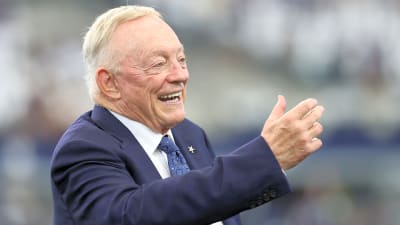
Minnesota Wild forward Matthew Boldy has been one of the most impressive players in the Stanley Cup Playoffs. The series between the Wild and Golden Knights is even after two games, and as the games shift to Minnesota, the Wild are gaining hope in their chances.
If Boldy keeps dominating offensively, the Wild could upset the Pacific Division-winning Golden Knights. Slowing him down is already proving to be a difficult challenge for Vegas, but one way to help would be to stiffen up their defense along the blue line. By trying to interrupt Boldy's entrances into the offensive zone, they could stifle his speed and momentum and hopefully catch the Wild unaware going the other way.
Boldy's line has been excellent at gaining the offensive zone. Between him and superstar winger Kirill Kaprizov, their puck-carrying skills are world-class. They can enter the offensive zone single-handedly or make quick passes to gain entry to the zone. It's led to two of Boldy's three goals in this series.
What the Golden Knights could do is stack their defensive blue line. The team tends to play a zone-type defense to clog the middle of the ice, but the Wild's puck movement has neutralized that. Instead, they should opt for a man-on-man approach to see if that yields better results.
Of course, it may not be that simple for the Knights. Boldy is also doing an excellent job at transitioning defense to offense. In Game 2, it was his defensive efforts that directly led to his third goal of the series. The Knights were working on their offensive zone chance and launched a point shot towards the net. Boldy stepped in front and blocked it. The Wild took possession and went the other way, and Boldy was rewarded with a mini breakaway opportunity. He buried the shot behind Golden Knights goalie Adin Hill for his third of the first round.
If the Golden Knights don't adjust quickly, the Wild will take control of the series. Boldy and Minnesota's ability to win the blue line is giving them a clear advantage, and it could help them clinch the series if Vegas doesn't figure out how to stop it.
More must-reads:
- Canucks believed to have inquired about Predators' Steven Stamkos
- MLB reveals finalists for major awards
- The 'NFL Passing YPG leaders' quiz
Breaking News
Trending News
Customize Your Newsletter
 +
+
Get the latest news and rumors, customized to your favorite sports and teams. Emailed daily. Always free!








